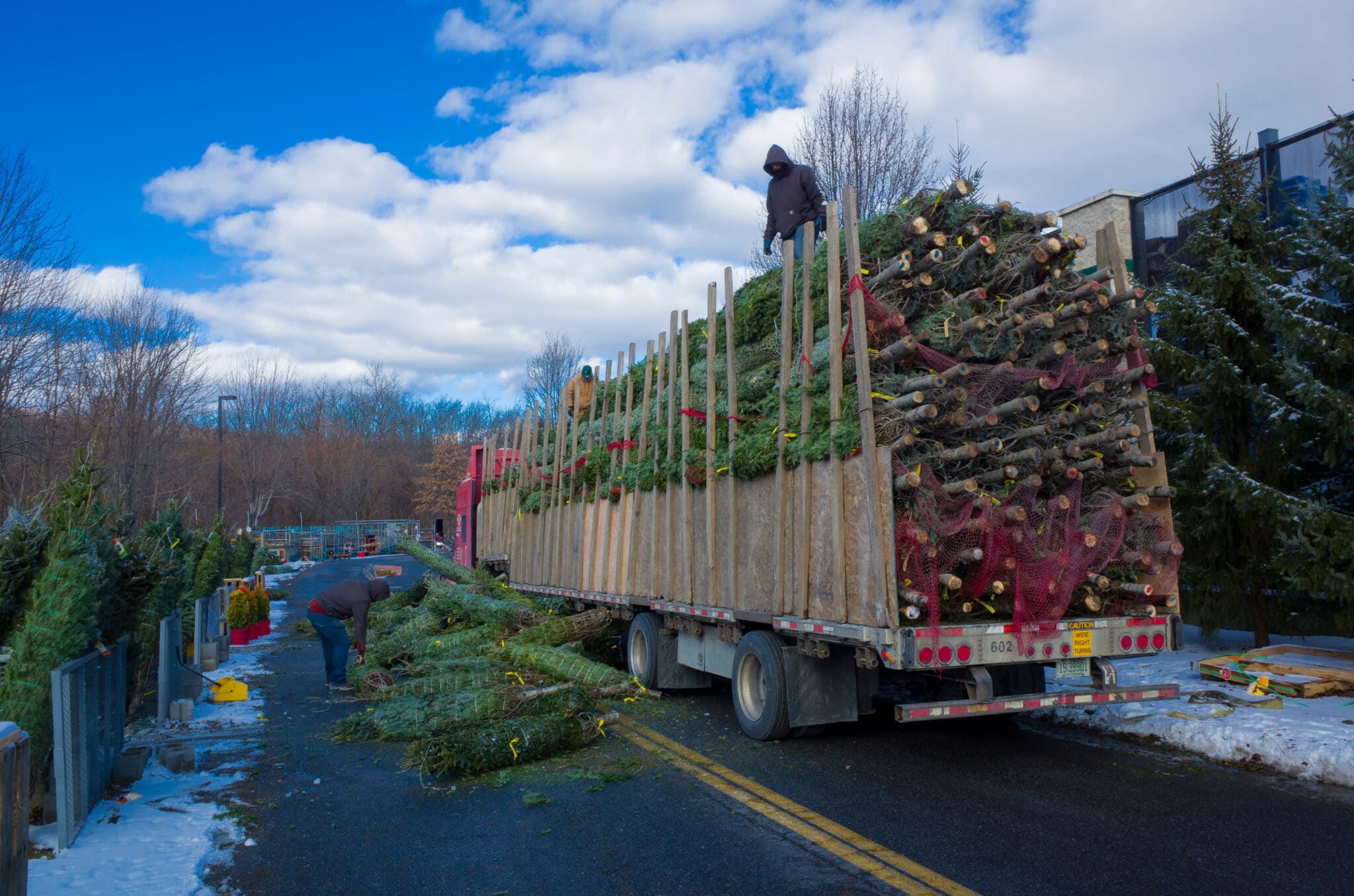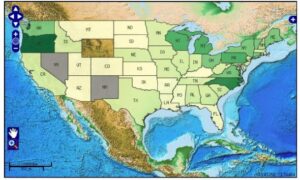
Every year . . .
- 73 million Christmas trees are planted all over the United States.
- 25-30 million trees are delivered across the nation to prepare for the holiday season.
As the holidays approach and families begin gathering, flatbeds piled high with Christmas Trees are en route to a marketplace near you.
Christmas Tree Production
The bulk of Christmas trees are harvested in the Pacific Northwest, East North Central Midwest, and Northeast regions of the United States.
The highest producing states are Oregon and North Carolina, each harvesting millions of trees every year.
Cut Christmas Trees: Area Harvested, Measured in Trees
Key: Lightest Green = Least trees harvested, Darkest Green = Most Trees Harvested, Gray = Data Unavailable
Chart source: DAT
Christmas Tree Impact on Capacity & Rates
Thanksgiving weekend is usually when demand begins ramping up, so marketplaces begin stocking up on trees well in advance.
From mid-October to mid-December, there’s a huge uptick in outbound shipments from those high producing areas. During this time, trucking capacity becomes strained.
This is when we normally see outbound rates in the Pacific Northwest (PNW) go up and inbound rates trend cheaper. Outbound Oregon rates usually shoot up in late October and peak in mid-December. This trend is consistent with other outbound PNW destinations during this time.
Any shipments leaving high-producing Christmas tree states should prepare for strained capacity and a steady increase in outbound freight rates from late October to mid-December, as previously mentioned. This, combined with winter weather and peak holiday shipping demand, means shippers can also expect slower transit times and delays.
Service Failures Abound During Holiday Shipping
Keep in mind that many consumer-packaged goods (CPG) brands rely on the holiday season for a decent chunk of their revenue. In turn, most ramp up their production and supply efforts during this time of year, meaning more freight orders will need to be fulfilled.
Because carriers limit their hours to accommodate drivers and families around the holidays, they must complete more hauls with less available service days. Most are also closed for Thanksgiving and operate on reduced hours the day before and after. The same goes for Christmas, which noticeably shrinks available capacity for your freight. To complicate the situation further, increased demand for freight services and increased orders during peak means carriers often overcommit.
This can lead to service failures as they scramble to cover the increased volume, which equals freight left on the dock, missed deliveries, lost sales, and retailer chargebacks. This is rather problematic when it comes to fulfilling POs, particularly during the busiest shopping season of the year.
Check out this article for 6 ways you can prepare your supply chain to endure peak holiday disruption this year.
Get Ahead of Christmas Tree Capacity Strains
Working with a third-party logistics provider is always great move, but especially so leading up the holidays.
At Zipline Logistics, we’ve navigated our fair share of strained capacity and winter storms. Bringing both our retail and freight market expertise, we act as an extension of your network and can put out fires before they arise.
This means every shipment comes with proactive communication, creative solutions, and 24/7 availability to have your questions answered or get the help you need.
No need to take on holiday shipping by yourself this year.
